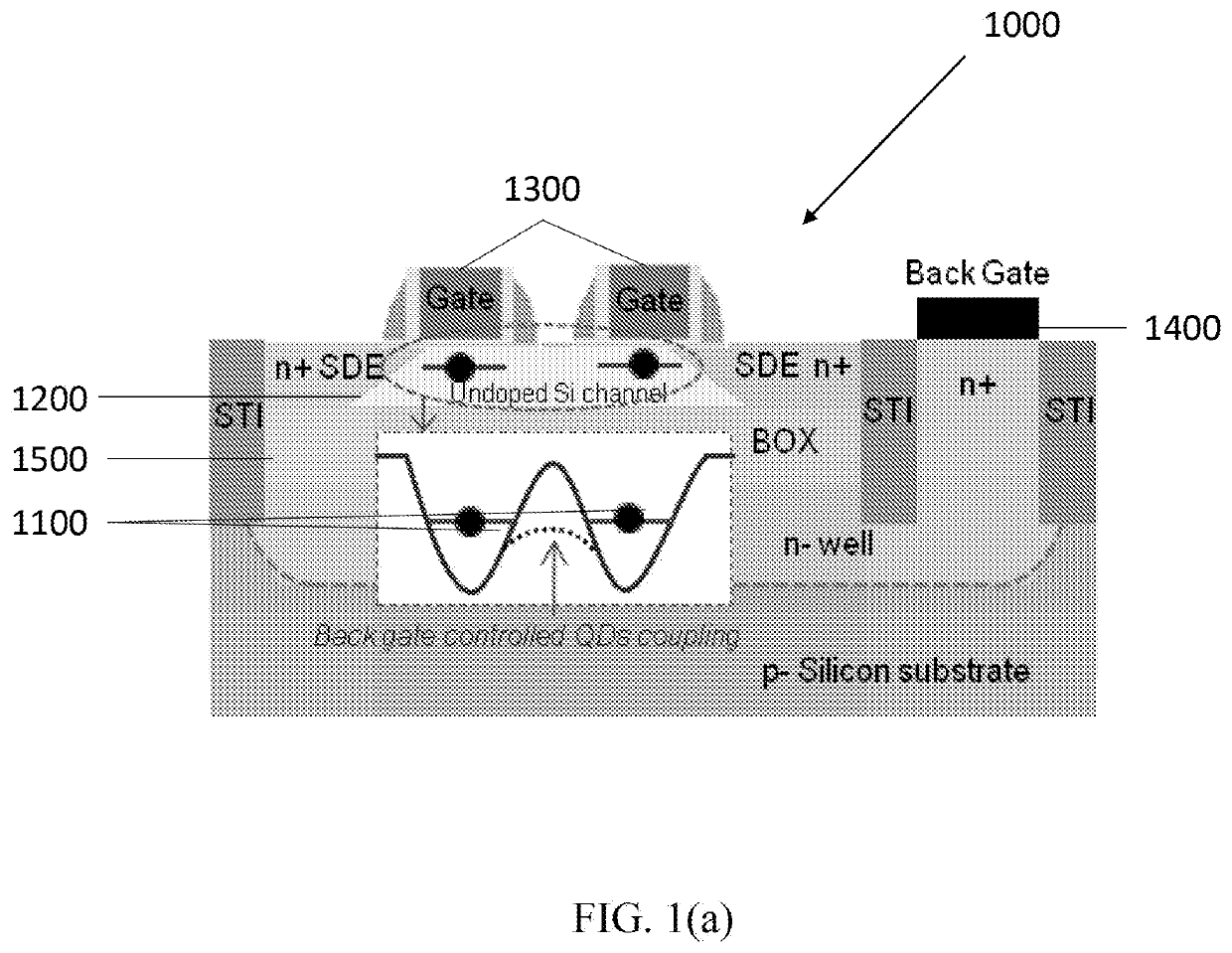Monolithic qubit integrated circuits
a monolithic, integrated circuit technology, applied in the field of integrated circuits, can solve the problems of limited operation, lack of monolithic integration, degrade readout fidelity and computing speed, etc., to avoid overloading qubits and maximize spin-readout bandwidth
- Summary
- Abstract
- Description
- Claims
- Application Information
AI Technical Summary
Benefits of technology
Problems solved by technology
Method used
Image
Examples
Embodiment Construction
[0062]The description that follows, and the embodiments described therein, are provided by way of illustration of an example, or examples, of particular embodiments of the principles of the present invention. These examples are provided for the purposes of explanation, and not of limitation, of those principles and of the invention. In the description, like parts are marked throughout the specification and the drawings with the same respective reference numerals. The drawings are not necessarily to scale and in some instances proportions may have been exaggerated in order to more clearly to depict certain features of the invention.
[0063]According to an embodiment, this description relates to monolithically integrated semiconductor quantum processors, such as per the characterizations in D1 (S. Bonen, et al. Cryogenic Characterization of 22-nm FDSOI CMOS Technology for Quantum Computing ICs. In IEEE, 2018) and the designs in D2 (M Gong, et al. Design Considerations for Spin Readout A...
PUM
 Login to View More
Login to View More Abstract
Description
Claims
Application Information
 Login to View More
Login to View More - R&D
- Intellectual Property
- Life Sciences
- Materials
- Tech Scout
- Unparalleled Data Quality
- Higher Quality Content
- 60% Fewer Hallucinations
Browse by: Latest US Patents, China's latest patents, Technical Efficacy Thesaurus, Application Domain, Technology Topic, Popular Technical Reports.
© 2025 PatSnap. All rights reserved.Legal|Privacy policy|Modern Slavery Act Transparency Statement|Sitemap|About US| Contact US: help@patsnap.com



